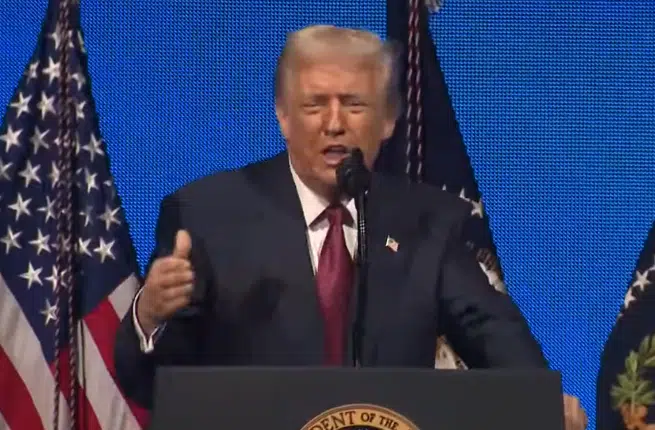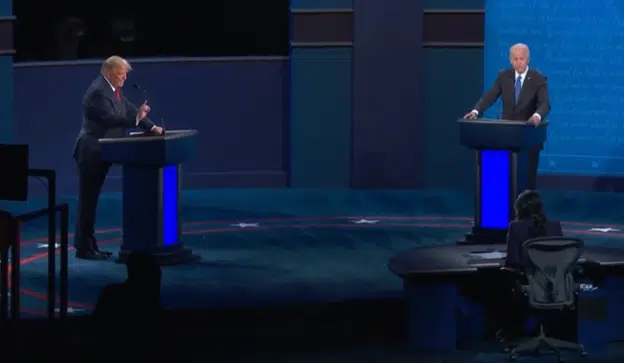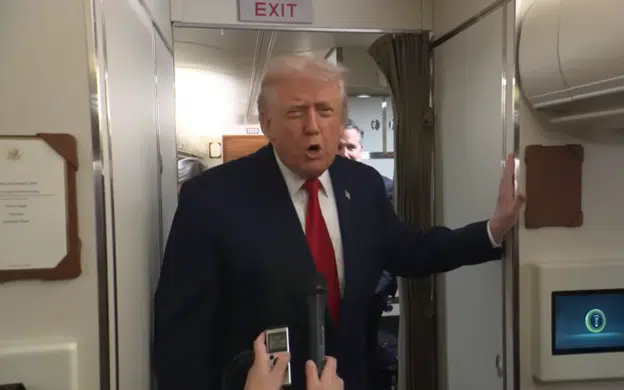“We have a higher deficit with China now than we did before.”
That was former Vice President Joe Biden in the first presidential debate versus President Donald Trump, claiming that the U.S. trade in goods deficit with China is greater now than it was four years ago.
Here’s the problem. It’s just not true.
In 2019, the trade deficit with China was $345.2 billion, down from its 2015 level of $367.3 billion, a 6 percent drop, according to data from the U.S. Census Bureau. That came as the President’s 25 percent tariffs on $250 billion of Chinese goods and another 7.5 percent on the remaining $300 billion of goods were taking effect.
On top of that, in the first seven months of 2020, the trade deficit with China was down another 18 percent to $163.36 billion from its $199.5 billion level in 2019, and down 19.8 percent from its $203.9 billion level in 2015.
Nominally, that is the lowest level since 2011.
And it’s all because President Trump got tough with China on trade. Biden wishes he had Trump’s record on trade.
More than any other issue, it was President Trump’s America first position on trade deals that helped to put him over the top in the Electoral College in the Rust Belt states of Pennsylvania, Michigan, Ohio and Wisconsin by uniting union and conservative households and creating bipartisan support for Trump’s presidential bid in 2016.
Democrats had forgotten about blue collar workers, a traditional constituency of the party, and Hillary Clinton paid for it dearly against Trump.
Meaning, Democrats’ number one priority for 2020 was to nominate a candidate who could neutralize Trump’s advantage on the trade issue and more broadly his strength on the economy.
Instead, they nominated Joe Biden.
Biden voted for the North American Free Trade Agreement (NAFTA) in 1993 and permanent normal trade with China in 2000. And, as Vice President, under former President Barack Obama helped to negotiate the Trans-Pacific Partnership.
As a result, between 2000 to 2016, the U.S. had a $4 trillion of trade in goods deficit with China, costing America more than 6.1 million manufacturing jobs between 1998 and 2010, according to the Bureau of Labor Statistics.
President Trump knocked Biden in the debate, telling the former Vice President, “China ate your lunch, Joe.” He’s right.
Biden also was instrumental in orchestrating sweetheart deal with Chinese President Xi Zinping (then Vice President of China) after meetings in 2011 and 2012 to bring Chinese companies to U.S. investors. This culminated in a 2013 Memorandum of Understanding by the Public Company Accounting Oversight Board (PCAOB overseen by the Securities and Exchange Commission, allowing 156 Chinese companies to be listed on U.S. exchanges with a market capitalization of $1.2 trillion, according to the U.S.-China Economic and Security Review Commission.
This 2013 deal further capitalized production in China using child and forced slave labor. According to the annual report on child and forced labor by the Department of Labor Bureau of International Labor Affairs, any investment in Chinese companies producing textiles are made by child labor, artificial flowers, Christmas decorations, coal, footwear and garments and nails are made by forced labor, and bricks, cotton, electronics, fireworks and toys are made by child and forced labor. The Biden-Xi 2013 deal effectively made Americans slave holders.
In his acceptance speech for the Democratic nomination on Aug. 20, Biden hardly mentioned trade at all. Which is little wonder, he simply does not have a good record on this issue.
In contrast, President Trump ended NAFTA with the renegotiated U.S.-Mexico-Canada Agreement (USMCA), withdrew from the Obama-Biden 12-nation Trans-Pacific Partnership and managed to get China to agree to a phase one trade deal even with the 25 percent tariff on $250 billion of goods and another 7.5 percent on the remaining $300 billion of goods being levied.
As a result, again, the trade deficit with China is down two years in a row to its lowest level since 2011.
The trade pressure by Trump, including leveraging the tariffs and threatening sanctions — the art of the deal — worked to American workers’ advantage, with jobs coming back to the U.S. When Biden had his chance, he sold America out — and given another chance, he’ll do it again.
Robert Romano is the Vice President of Public Policy at Americans for Limited Government.







